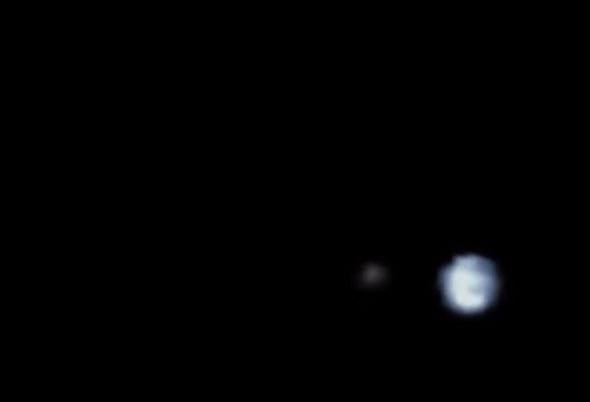On Oct. 23, 2013, the Juno spacecraft stole a little bit of Earth’s energy. By doing so, it increased its speed relative to the Sun, catapulting it on its way to the planet Jupiter.
As it flew past our planet (much) faster than a speeding bullet, it took a series of images of Earth, which also happened to capture the Moon in its stately orbit around us. The resulting animation is really quite enthralling:
The camera that took the images is low-resolution, and not really designed to do this sort of work. Worse, the entire spacecraft spins twice per minute, meaning it could only snap the pictures to make the animation when the Earth rotated back into view. Even with that going against them, engineers managed to capture images of our planet and create the video.
My favorite part of this is actually the Moon: Note how dark and gray it looks. That’s because it is. On average, the Moon reflects about 12 percent of the sunlight that hits it, while the Earth reflects closer to 40 percent. And while our planet is a lovely blue, the Moon is mostly gray rock.
Also, the video starts just when, from Juno’s point of view, the Moon happened to be lined up near the Earth. It actually orbits Earth more than 100 times farther away than its own diameter! The Moon is 3474 km (2150 miles) across, and orbits 400,000 km (240,000 miles) away. That distance gets magnified as Juno zooms toward the pair, so the Moon slides off the field of view to the right, not to be seen again.
Just so’s you know, Juno passed just 560 kilometers (350 miles) above the Earth’s surface! That’s a very close shave. And it swept past us at 138,000 kph (93,000 mph). Yikes.
Juno’s mission is to investigate the internal structure of Jupiter, which is difficult to do thanks to the planet’s massively thick atmosphere. Juno has a mass of 3600 kilograms, which is too heavy for a rocket to simply fling it to Jupiter, so it had to pass the Earth to gain enough velocity relative to the Sun to boost it out. It will arrive at Jupiter on July 4, 2016.
